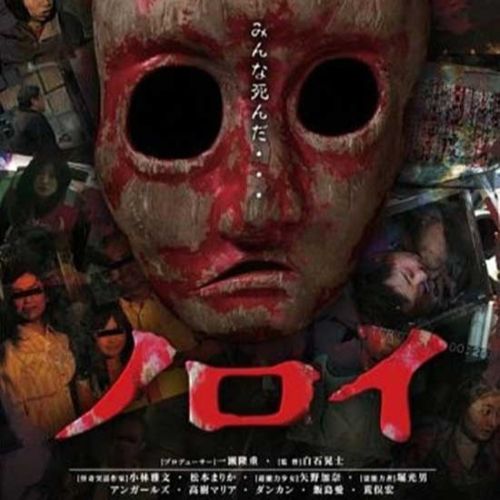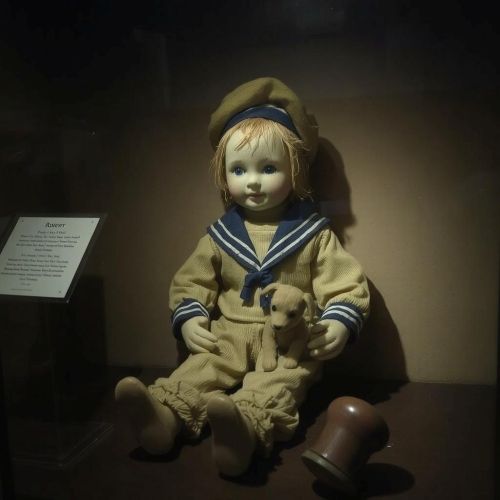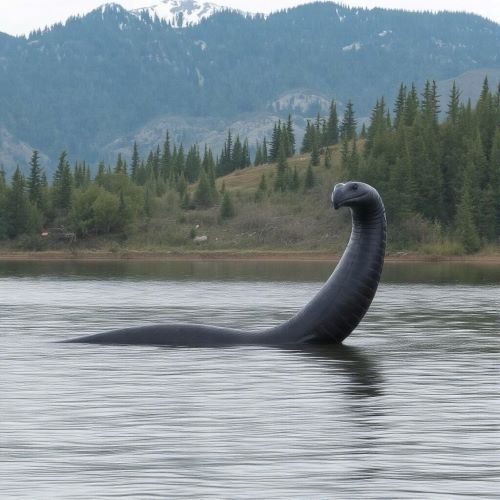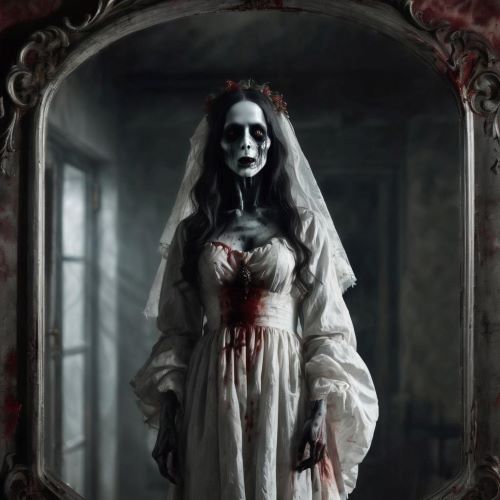Black-Eyed Children : The Deadly Visitors
| Description | |
|---|---|
| Origin | United States of America |
| Classification | Humanoid |
| Demeanour | Evil |
| Habitat | Towns, Cities, Villages |
| Status | Not Proved |
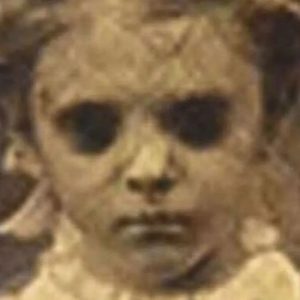
Introduction
The legend of The Black-Eyed Children has become one of the most chilling and enduring tales of modern American folklore. Emerging from the depths of internet forums and eyewitness reports in the mid-1990s, these eerie figures are said to resemble normal children or teenagers—until their jet-black eyes and unsettling demeanor betray their unnatural nature. First made famous by journalist Brian Bethel’s encounter in Texas, stories of these beings have since spread across the globe, captivating believers, skeptics, and storytellers alike. Blending elements of supernatural folklore, psychological horror, and cultural fear of the unknown, The Black-Eyed Children have evolved into a symbol of modern paranormal mythmaking in the digital era.
Physical Attributes
The most defining characteristic of The Black-Eyed Children is their eyes—completely black, with no visible sclera, iris, or pupil. Witnesses describe them as “bottomless voids” that inspire instant dread. These entities typically appear between the ages of six and sixteen, dressed in outdated or strangely mismatched clothing that gives them a slightly “off” appearance. Their skin is often described as pale, even bluish or waxen, adding to the sense of lifelessness. They speak in calm, emotionless tones, often using vocabulary and phrasing far too mature for their apparent age. Some witnesses claim their presence is accompanied by an overpowering sense of anxiety or dread, occasionally accompanied by nausea or dizziness. Their stillness and mechanical mannerisms amplify their inhuman aura, making even brief encounters profoundly disturbing.
First Sighting/Reporting
The modern legend of The Black-Eyed Children can be traced back to 1996, when Texas journalist Brian Bethel published a personal account of his late-night encounter in Abilene. While sitting in his car outside a movie theater, Bethel was approached by two boys who asked for a ride home to fetch money for movie tickets. Despite their polite tone, Bethel felt an inexplicable wave of fear. When he finally noticed that their eyes were entirely black, he panicked and drove away. His account was shared on early internet forums and mailing lists, quickly gaining viral attention. Paranormal enthusiasts, bloggers, and news outlets picked up the story, and soon similar encounters began to surface from around the world—including in the UK, Canada, and Australia. Although Bethel’s story remains the most famous, it gave rise to a pattern that would define The Black-Eyed Children mythos for decades to come.
Other Names
While “Black-Eyed Children” or “Black-Eyed Kids” (often abbreviated as BEKs) are the most common names, the phenomenon has been given various monikers in popular culture and online communities. Some call them the “Midnight Children,” “Shadow Kids,” or “Children of the Void,” depending on local interpretations. In paranormal circles, comparisons are often drawn between BEKs and ancient folkloric beings such as changelings or fae children, as well as modern supernatural archetypes like demonic entities or alien-human hybrids. Despite these variations, the phrase Black-Eyed Children remains the definitive term in contemporary discussions, uniting the diverse interpretations of this enduring legend.
Modus Operandi
Encounters with The Black-Eyed Children typically follow a disturbing and highly consistent pattern. The children appear at night, often near isolated homes, parking lots, or deserted roads. They usually appear in pairs or small groups, politely asking to be let inside—to use the phone, call their parents, or seek shelter. Their speech is calm yet oddly formal, and their insistence grows if refused. Witnesses almost universally report an overwhelming sense of unease, a gut-level warning that something is deeply wrong. Crucially, the children never force entry; they must be invited inside. This invitation rule mirrors ancient vampire lore and other supernatural traditions where entities require permission to cross thresholds. In some accounts, granting entry leads to misfortune, illness, or a lingering presence of darkness within the home. The legend’s power lies in its psychological inversion of innocence—children, traditionally symbols of trust and safety, become vessels of fear and manipulation.
Pop Culture References
Since the late 1990s, The Black-Eyed Children have transcended folklore and entered the realm of popular culture. They have appeared in films such as Black Eyed Kids (2012) and Let Us In (2021), both inspired directly by witness testimonies and internet lore. Television programs like Monsters and Mysteries in America and countless paranormal documentaries have devoted segments to their mythos. Podcasts, YouTube horror channels, and creepypasta websites continue to retell and reinterpret their story, ensuring its survival in the digital landscape. In comic books and literature, The Black-Eyed Children often serve as metaphors for lost innocence, technological paranoia, and the fear of the uncanny in everyday life. Their adaptability across genres—from supernatural horror to psychological thriller—demonstrates how effectively the legend taps into primal fears of deception and intrusion.
Current Status
Today, The Black-Eyed Children persist as one of the most recognizable urban legends in the paranormal community. New accounts continue to surface online, often accompanied by photos, shaky videos, or alleged firsthand testimonies. Reddit threads, TikTok videos, and online forums regularly revisit the legend, blending fact, fiction, and speculation in equal measure. Skeptics classify these reports as examples of creepypasta—fictional horror stories shared for entertainment that sometimes blur into belief. Psychological explanations suggest that fear-induced hallucinations, pareidolia (seeing patterns where none exist), or misinterpretations of ordinary encounters could account for many reports. Folklorists, however, view The Black-Eyed Children as a modern myth that reflects deeper anxieties about vulnerability, trust, and the invasion of safe spaces.
Despite the lack of physical evidence, the consistency of reported encounters over nearly three decades has kept the legend alive. Paranormal researchers continue to explore theories connecting BEKs to demonic possession, alien encounters, or interdimensional entities. For believers, the persistence of the legend suggests that The Black-Eyed Children represent something more than a simple internet hoax—they embody a modern archetype of fear itself.
Source
Burke, B. (2020). Black-Eyed Kids and the Child Archetype. In The cultural construction of monstrous children (pp. 237-252). Cambridge University Press. https://www.cambridge.org/core/books/cultural-construction-of-monstrous-children/blackeyed-kids-and-the-child-archetype/810C659A7BDBFAC17F24131936C0DB0E
Bethel, B. (1996). Initial report of the Black-Eyed Children encounter [Internet forum post]. Abilene Reporter News. As cited in Wikipedia: Black-eyed children. https://en.wikipedia.org/wiki/Black-eyed_children
Offutt, J. (2024, November 13). Death as a child: The modern legend of the Black-Eyed Children. Atlas Obscura. https://www.atlasobscura.com/articles/black-eyed-children-urban-legend
Hill, S. A. (2014). Investigations into paranormal claims: Black-eyed children. Skeptical Inquirer, 38(4), 12-15. Retrieved from https://skepticalinquirer.org/
Monstrum. (2014). Don’t let them in! The urban legends of Black-Eyed Children [Documentary]. PBS. https://dcmp.org/media/16389-monstrum-don-t-let-them-in-the-urban-legends-of-black-eyed-children





